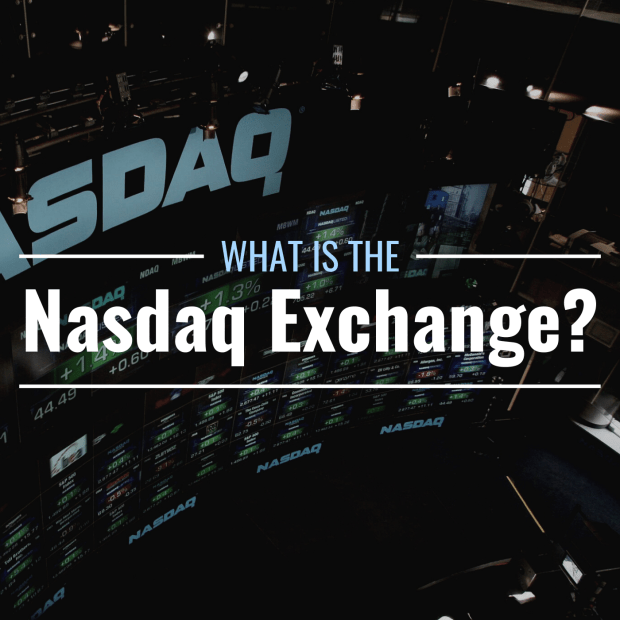
What Is the Nasdaq Stock Market?
The Nasdaq Stock Market (or Nasdaq Exchange) is the world’s second-largest centralized equity marketplace after the New York Stock Exchange (NYSE).
Debuted in February of 1971, the Nasdaq was the first all-electronic stock exchange. From the outset, it did not use a physical trading floor, instead opting for a transparent and speedy electronic trading system that reduced both bid-ask spreads and trading costs.
As the Nasdaq grew in popularity, it become the de-facto home for technology-based growth companies in the U.S. This is partially due to the exchange’s listing costs, which are lower than those of the NYSE and thus appealing to new or expanding companies that need to allocate as much cash as possible to growth.
Today, the exchange is home to many of the world’s best-known technology companies, including Apple, Meta (Facebook), Alphabet (Google), and Amazon.
Is the Nasdaq a Dealer Exchange or an Auction Exchange?
Unlike the NYSE, which operates as an auction exchange, the Nasdaq operates as a dealer exchange. This means that many market makers provide liquidity in competition with one another.
Market makers do this by posting two prices for any given security at any given time—one at which they will buy the security and one at which they will sell it. By buying and selling simultaneously, these market makers collect profit via the bid-ask spread for each security they trade. For instance, if a market maker bought a share of Stock A for $10 and sold a share of Stock A for $10.03, the bid-ask spread of $0.03 would constitute its profit.
In a dealer market, investors use brokers (most of which are electronic) to find the lowest asks for stocks they want to buy and the highest bids for stocks they want to sell. Market makers, by holding large amounts of securities and being willing to buy or sell them at any given time, provide dealer markets with the much-needed liquidity that allows individual investors to make trades quickly at current market prices.
Nasdaq Exchange vs. Nasdaq Composite: What’s the Difference?
When you hear someone discussing the Nasdaq, they may be talking about one of two things—the Nasdaq exchange, which is the subject of this article, or the Nasdaq Composite, which is a stock index. Unlike an exchange, which is an actual marketplace for the trading of equities and other securities, a stock index is essentially a theoretical portfolio that investors use as a benchmark to gauge market performance.
The Nasdaq composite is a stock index that attempts to track the performance of all of the stocks that trade on the Nasdaq exchange. These companies are weighted by market capitalization, so those worth more (as measured by the current value of all outstanding shares) affect the price of the composite more than those worth less.
The Nasdaq Composite is a popular benchmark for the U.S. stock market, but it only includes companies that trade on the Nasdaq exchange. However, other indexes, like the Wilshire 5,000, attempt to include all publicly traded U.S. companies, including those that trade on the NYSE. These “total market” indexes may be better benchmarks for the American equity market at large than the Nasdaq Composite.
What Are the Nasdaq’s Top Companies by Market Capitalization?
As of late April 2022, the top five companies (by market cap) traded on the Nasdaq exchange were as follows:
- Apple (AAPL)
- Microsoft (MSFT)
- Alphabet (GOOG/GOOGL)
- Amazon (AMZN)
- Tesla (TSLA)
What Are the Nasdaq’s Listing Requirements for Companies?
Nasdaq has four different sets of listing requirements. A company must fulfill at least one of these sets of requirements (in addition to meeting other criteria) in order to be eligible for listing on the exchange.
Some general requirements include a minimum share price of $4 and at least 1.25 million shares of float at the time of application. Nasdaq’s full listing requirements are outlined in a 19-page listing guide available on its website.
What Are the Nasdaq’s Listing Fees for Companies?
As of April 2022, the Nasdaq exchange’s “all-inclusive” annual listing fees, which eliminate a variety of other fees that vary based on a number of factors, are as follows:
- Up to 10 million shares: $48,000
- 10+ to 50 million shares: $59,500
- 50+ to 75 million shares: $81,000
- 75+ to 100 million shares: $107,500
- 100+ to 125 million shares: $134,500
- 125+ to 150 million shares: $145,500
- Over 150 million shares: $167,000
The all-inclusive annual listing fees above represent just one way a company can pay to trade on the Nasdaq. The exchange’s full fee structure can be found on its website.
Is Nasdaq a Publicly Traded Company?
Nasdaq Inc, the company that owns and operates the Nasdaq stock exchange, went public via IPO (initial public offering) in 2002. This means that investors can trade shares of the company easily using any number of popular online brokerages. Nasdaq Inc’s ticker symbol is NDAQ, and unsurprisingly, it trades on the Nasdaq exchange—not the NYSE.







